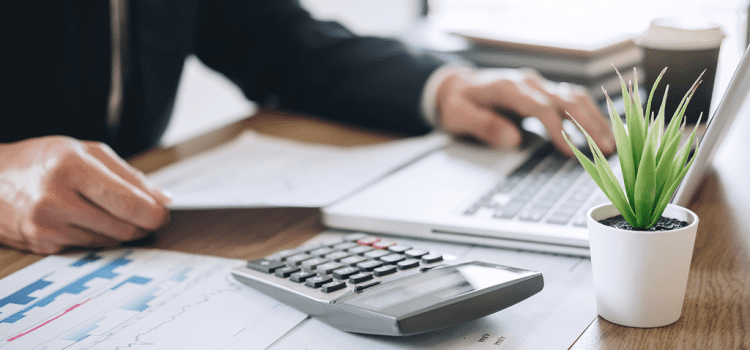Making Tax Digital (MTD) is a government initiative to generate a fully digital, paperless tax system. Initially introduced for VAT-paying businesses, it will soon extend to taxpayers using Self Assessment – which inevitably affects freelancers!
A quick update on Making Tax Digital
This digital tax system is intended to make life easier, more seamless and more accurate for all taxpayers. It applies to most businesses, landlords and the self-employed, as well as some individual taxpayers too.
HMRC describes the initiative as being part of efforts to make it “easier for individuals and businesses to get their tax right and keep on top of their affairs”.
The rules are already in place for VAT registered businesses, so we are now looking towards HMRC’s plans to roll out MTD for other tax payers, such as Income Tax and Corporation Tax.
Making Tax Digital for Income Tax
As with MTD for VAT, Making Tax Digital for Income Tax (or MTD IT) is a new streamlined way of digitally reporting earnings to HMRC. It changes the way in which freelance sole traders and anyone else completing a Self Assessment tax return check in with HMRC.
What changes with MTD IT?
The MTD Income Tax process replaces the traditional Self Assessment tax return. Most freelancers submit Self Assessment, so it’s big news for the freelancing sector.
Rather than an annual return, taxpayers will instead keep digital tax records, and submit these as a series of updates throughout the year.
HMRC will use the information to provide you with a year-to-date overview of how much tax you owe at any given time.
You’ll then submit a final declaration and pay your bill by 31st January the following tax year (a bit like the existing system).
When will MTD IT start for freelancers?
After several delays, MTD for Income Tax is due to launch in April 2026 for sole traders and landlords earning more than £50,000. You’ll still need to submit a Self Assessment tax return for the tax year prior to registration. The MTD threshold reduces to £30,000 in April 2027, and drops again to £20,000 from April 2028.
The benefits of Making Tax Digital for Income Tax
The are actually plenty of advantages for freelancers facing MTD for Income Tax. If you don’t already keep digital bookkeeping records, it’s worth considering making the switch earlier. Not only will it give you more time to get to grips with it, the benefits of digital accounting aren’t to be overlooked.
As the initiative continues to roll out and embed, we’re sure this list will evolve but for the time being, these are the main benefits of making the transition:
- Filing and submitting returns becomes much less time-consuming
- Filing and submitting returns becomes more efficient
- Online billing makes paying tax owed more streamlined
- Less risk of mistakes and human error thanks to automation
- Improved accuracy means less instances of incorrect payments
- Moves towards going paperless are far more sustainable and eco-friendly
- Digital accounting means information can be accessed more readily
- Business owners have a more complete overview of their tax profile
- Tax information is available throughout the year, rather than only at year end
- Less chance of a surprise compliancy check from HMRC which has said it “wants to help businesses get their tax right first time and prevent them from feeling punished for making honest mistakes”
Where do I sign up?
Before you embark on the MTD for Income Tax sign up process, it’s important to note that you will require access to bookkeeping software that is Making Tax Digital compliant.
In order to sign up to the initiative, you will need to have the following information to hand:
- Full business name
- Email address
- National Insurance number
- Unique Tax Reference (UTR) number
- Accounting period information
- The accounting type you use
- Government Gateway log in details used when previously filing Self Assessment returns
You can sign up via the online service or through your accountant.
Once you are registered and signed up, you will be required to keep thorough digital records of all income and business expenses on a quarterly basis. This should be done through your MTD for Income Tax compatible accounting software.
Who is eligible?
To sign up, you will need to fit into all of the following criteria, as outlined by HMRC:
- Resident of the UK
- Registered for Self Assessment (with up to date returns and payments)
- A sole trader making income from one business and/or a landlord renting out property in the UK
Expect this eligibility to change and expand overtime as the scope of MTD widens.
Finding software that is MTD compatible
As we mentioned above, before you can sign up, you will need to find (or already be using) a software which is compatible with Making Tax Digital.
Not all digital records have to be held on the same piece of software but our experts would recommend that keeping everything in one place is best practice when it comes to efficiency and good housekeeping.
HMRC says that you “must have links between the software you use” and these links can be forged through things like records sent via email, linked spreadsheet cells and downloaded or uploaded files.
What is the deadline for signing up to Making Tax Digital for Income Tax?
If you are eligible, you are able to sign up to the initiative now and comply on a voluntarily basis. If you do not choose to sign up voluntarily, you will need to do so by April 6th 2026 if your turnover meets the registration requirement.
Staying compliant with Making Tax Digital for Income Tax
In order to remain compliant with MTD for Income Tax, you just need to follow the guidelines outlined above, summarised in these six simple steps:
- Sign up via the online service or through your accountant
- Use MTD compatible software
- Keep digital records of income and expenses
- Submit Income Tax updates to HMRC every 3 months (or more regularly at your discretion)
- Finalise your business income accurately, including any personal income and reliefs claimed
- Submit a final declaration at the end of each accounting period
Following the rules of any MTD practice requires access to technology, the ability to use technology and a satisfactory internet connection. HMRC is reportedly willing to make any business or landlord exempt from the electronic elements of bookkeeping and filing should they be able to prove they are unable to use them. This might be down to factors including (but not exclusive to) age, disability or location.
Preparing your business for the transition to Making Tax Digital
Invest in your software provider – Making the transition from traditional processes to MTD will be made ten times easier with a suitably sophisticated software. It doesn’t have to have a complex interface but it does pay to do your research and invest in something reputable which will provide the necessary support.
Set some budget aside – Although there is no administrative fee for signing up to MTD, HMRC has suggested that there would be an average cost of around £280 to each business making the transition. These costs are likely to be incurred through having to learn new software, investing in new software or updating existing services, upgrading hardware where necessary, and/or any additional accountancy fees. Setting some budget aside ahead of time will ensure your cash flow is covered.
Speak to your accountant – When it comes to moving over to MTD, there is nobody better equipped to offer support than your accountant. They will be able to ensure that you are well prepared and fully compliant, offering you complete peace of mind. If you aren’t yet using an accountant but are considering the benefits of doing so, now might be the perfect time to look into this.







